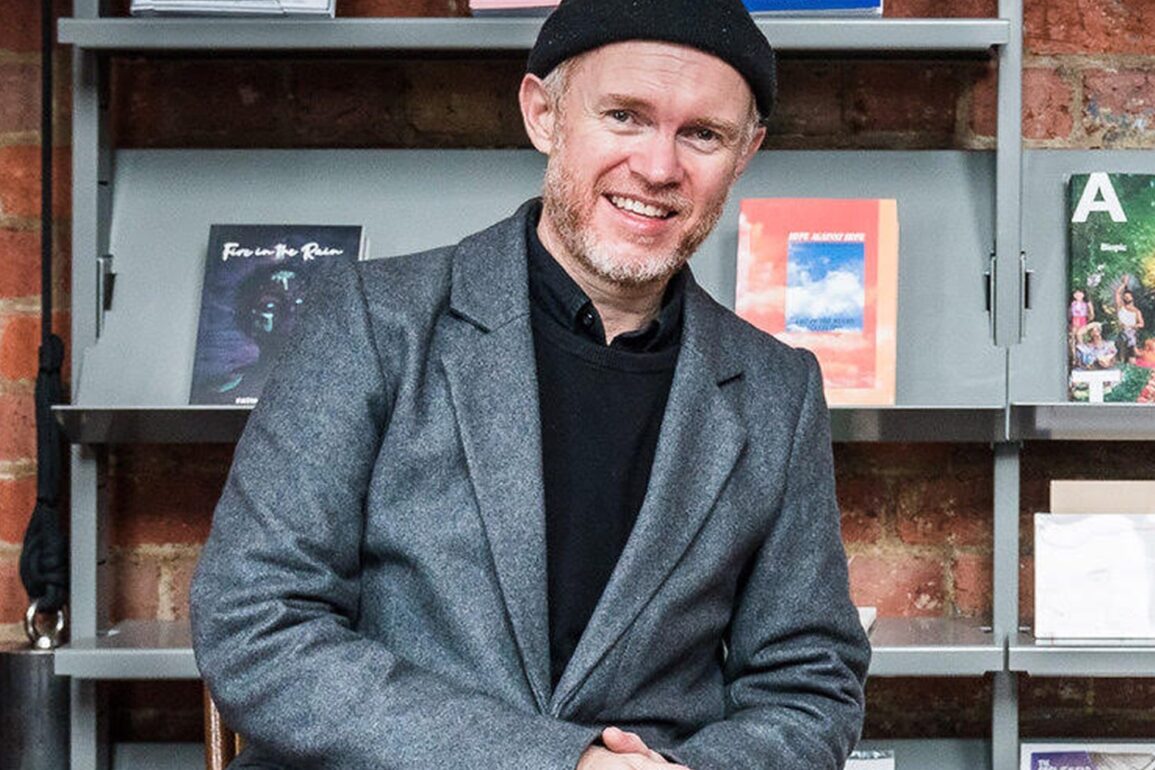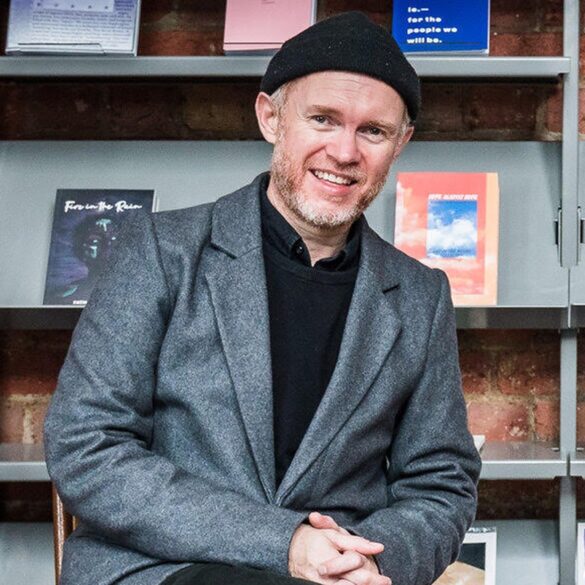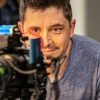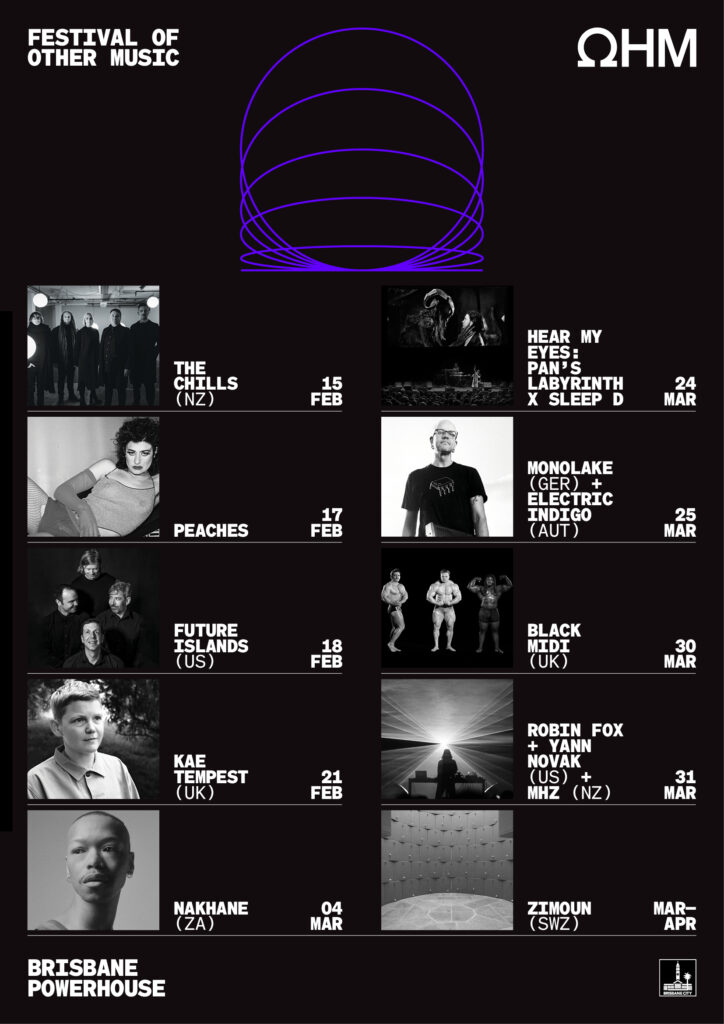Kicking off in Brisbane in February and March of 2023 is ΩHM (pronounced ‘ohm’) – the Festival of Other Music. The festival features a stunning array of musical artists such as Future Islands, Peaches, Kae Tempest, visual artists like Robin Fox + Yann Novak + mHz, and immersive artistic events like Hear My Eyes presenting sonic masterminds Sleep D providing a live score to Guillermo del Toro’s Academy Award winning Pan’s Labyrinth. All of this takes place in the stunning architecture of the Brisbane Powerhouse.
Arts Program Director Brad Spolding caught up with Andrew ahead of the festival launch on February 15th to talk about where the concept for ΩHM originated from, what audience members can expect with some of the visual arts events taking place, while also taking a look into the exciting and immersive visual and audio work from Swiss artist Zimoun.
For more details and to purchase tickets, head to BrisbanePowerhouse.org.
Where did the choice of the name ΩHM come from?
Brad Spolding: ΩHM is a measurement of sound. It’s also a measurement of electricity. Lawrence English, who runs Room40 Records, came up with the name. [Lawrence is] the co-curator of the festival with me, [and it] revolves around contemporary, edgier music, and installation. Fill and light-based work. Artists that work between sound, light, and music.
I want to touch on Hear My Eyes. Can you talk about the collaboration between Pan’s Labyrinth and Sleep D?
BS: They’re based in Melbourne, and they really premiere their work around the Melbourne International Film Festival. They [also] tour their work around Australia. Haydn Green is the curator of Hear My Eyes, and the last time they were here they did No Country for Old Men with Tropical Fuck Storm, so they haven’t been back to Brisbane since about 2017. This is a brand-new work for Pan’s Labyrinth from Sleep D, [who] are two guys from Frankston. In Melbourne, they run their record label called Butter Sessions, and they’re artists who are well known in the electronic music, club scene around the country. Obviously, Pan’s Labyrinth is this iconic Academy Award winning magical realist film that is a comment on the Spanish Civil War, [it has] incredible visuals throughout film and Sleep D will compose a new soundtrack that they’ll perform live. It’s also being formed as part of the Adelaide International Festival and it’s coming to Brisbane.
Can you talk about the Australian premiere of Triptych which is described as “an audio-visual space-time carving?” That sounds just like one of the most exciting experiences.
BS: That’s an Australian premiere by Robin Fox. Robin is a sound and laser artist. He’s also the director of the Melbourne Electronic Sound Studio, which is basically a library for vintage synthesisers that you can [visit] in Melbourne and set up a table and borrow from their catalogue. Loads of people across all forms of electronic music have been there to use their equipment. He’s primarily a composer and audio artist and we’re presenting the Australian premiere of his new work. He’s presented work right across Australia and is quite well known internationally with festivals like Unfound in Krakow, and also MUTEK in Montreal. [Robin’s] compositions and laser work are based around the idea of synaesthesia; the idea that light makes sound, and sound influences light, and those two things crossover really closely together.
He’s premiering that new work indoors in the Powerhouse in our main theatre, which we’re running in a new kind of mode [where the audience is standing]. Normally, it’s a seated theatre, but it’s got a retractable seating bank, so we can stand about 800-900 people in there. For a lot of the shows, we’re using that for the first time, like for the Peaches and Kae Tempest shows.
This is the audio-visual show headlined by Robin, it also featured Yann Novak from LA. Yann’s a visual artist and a composer, and his visual artwork is [made of] sort of gentle transitions of colour, more like the video works that are kind of big, single blocks of colour that transition, almost imperceptibly, across a period of time. He’s performing one of his compositions live to one of his visual arts works.
Then the other artist is Mo, mHz, lives in New Zealand, but he’s actually an Iranian refugee who ended up in New Zealand. His work is quite different. He’s equally like a visual artist and composer, but his work is really based around instrument building and machinery that makes sound. His shows are these kinds of these arrays on tables of machines that he has built that create noise and throw light across the space. It’s a really interesting triple bill of artists who approach audio-visual material and composition in music in really diverse ways. And that culminates in Robert Fox’s new work Triptych.
I’m curious about how important it is to have a place like the Brisbane Powerhouse house that because of its industrial look, reflects the style of music being played in it. Can you talk about the importance of that?
BS: Obviously, it’s an old power station. It’s an incredible architectural building that in my view, screams out for electronic music, noise music, contemporary edgier music. When you come to shows, and you’re standing in that space, watching Kae Tempest, or Peaches, or Future Islands, you can see the original architecture. The artists perform in front of what would have been the internal wall of the original Powerhouse. There aren’t many venues which have that original architecture as part of the presentation. It becomes a character, or a vibe that permeates through all of the shows that we do. That kind of graffitied, 100-year-old architecture, was originally built as a utility, but it’s been reimagined as contemporary art space, [and in my view it] really cries out for that kind of contemporary practice. It’s great that we’re able to invite these artists to present in this really special place.
With that brick facade, how does it resonate the sound and the music?
BS: We have an amazing production team who work on that side of things. It’s a space that’s designed for that [sound]. They work hard to make sure that the music featured in the shows we’re doing sounds great. It’s not a repertory theatre that’s been redesigned to be a music venue. I’ve been here coming close to a year, but around eight to ten years ago, there was a lot of music that was presented here in a way that we are now about to do. We certainly haven’t come up with this [ourselves]. We’re really looking back at some of the iconic shows that were here in the history of the organisation and using them to present the festival in that way.
One of the events being presented is Zimoun’s Material Concerns. Can you talk about the organisation and the planning for their work?
BS: I’ve known about Zimoun’s work for a really long time. I saw show in Montreal, at Elektra, I think six or seven years ago. He’s an incredible artist. It’s one of those shows that we’re doing where things really came together. I knew about his work and had always wanted to bring it to Australia, and Lawrence also knew Zimoun. [Last year] Room40 put out an album of his compositions. His work is based in visual arts, [where] sound is not a by-product, but it’s a result of his visual arts practice. He uses these repetitive, iterative sculptural works that create noise, and as they culminate together, they make this cacophony of sound.
We’re presenting two works, it’s the first time Zimoun has ever been presented in Australia. We’re doing one inside of our turbine platform, which is a big kind of chimney that you can actually walk inside of. The chimney is made out of cardboard boxes that are very resonant, and inside there are small little AC motors, with almost like a ping pong ball of cotton, one the end of a wire that vibrates back and forth. Each one of those makes an audible but gentle tap on the cardboard box, but [as] there’s about 120 of these boxes, which make up this tube, and then the chimney amplifies the sound and throws it out. From a distance, you hear this quite gentle sound, and then as you get closer it becomes louder and louder, and you walk inside this chimney, it’s actually kind of quite loud, and you discover where the sound is coming from.
These beautiful objects look quite robotic. They use everyday elements like cardboard boxes or sticks, and they have this en masse kind of aesthetic, which is a big series of objects that in other works, they make a kind of wave as they work together. And there’s a kind of randomness and improvisation to the works, but when we encounter the sound of them, it kind of draws us into this whole other level. We really want visual arts to be a big part of the ΩHM festival, music is also a really big part of it. We wanted to draw in – particularly film with Hear My Eyes – artists finding the spot between visual arts and sound like Robin Fox, and to premier in a visual arts context or presentation style in our gallery someone like Zimoun who is really at the forefront of that work. We’re super excited to have Zimoun’s first show in Australia, that isn’t going anywhere else.
Our plan is that ΩHM will happen every year in March. Lawrence and I had worked with some of the other festivals like Dark Mofo and Vivid where there’s a great programme of music and visual arts, and part of the concept for the festival was that there was nothing really like that in Brisbane. So, we wanted to make a space for that kind of practice in Brisbane and this will be our first one.





